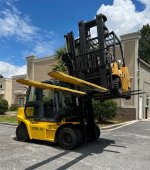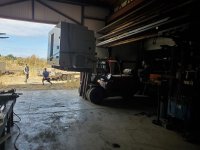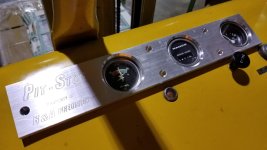Some time back we purchased a brand-new Mazak mill from a machinery dealer for parts, dirt cheap. Seems the customer they sold it too slid it off the forks from about what I was told 14 inches from the ground. I understand it cracked 8-inch-thick concrete. Their customer decided to install it themselves with a rental lift that was under rated for the mill.
Before I knew my go-to guys (riggers) had left the place they were, and moved on to a better place, I scheduled a move. I had never seen the guys that showed up for that one.
And it was a shit show. I had an '83 Nakamura Slant-1 at the time. Dumb-ass dropped one rear corner about 8". Hit hard. I was pissed beyond belief!
3 months later, The spindle drive in that machine took a crap. Took me a little bit to find a good tech to work on it. Most claimed "too old".
Which I translated to: you don't really know what your doing. Anyways, I eventually found a guy who fixed it right up. Foreign guy named Georgie I think, good dude.
He told me lots of solder-pads and Vias had taken a good hit. Any component on the board that had any weight to it had some type of damage or compromise at the solder joint. Cost me a pretty penny as it was a lot of work. But, the only components he actually replaced were electrolytic caps because of age.
Pretty sure he told me it was a voltage regulator that had a cold joint on one leg that left the drive in-operable. I think the repair was about $1500.
That was big coin for me at the time. But, a drop in the bucket compared to the $11k Fanuc wanted, or the $9k TIE wanted.
I sold it ASAP after that, and bought my current lathe. I follow the current owner on IG, and know for a fact the thing still runs and holds tenths.
They do tight tolerance aerospace stuff. That was a damn good machine. Slow, but SOLID!
Moral of the story: hire good riggers that wont drop your stuff!!!!!!!!












